Ciao, my friends! As promised, I’m back here and want to talk about Cacio e Pepe alla Romana with you this weekend.
I don’t know Cacio e Pepe until I put my feet on those little square shape “San Pietrini” in Rome. Surprisingly, over the growing time I’ve spent living here in Rome, I found that I order Cacio e Pepe alla Romana much more often than the famous Carbonara.
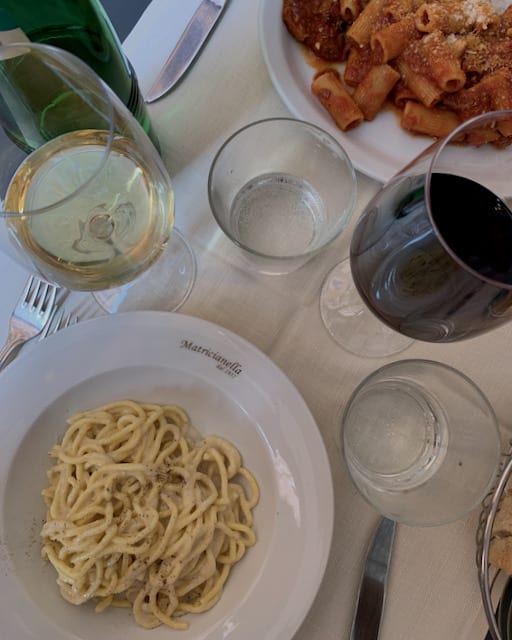
Ciao, my friends! As promised, I’m back here and want to talk about Cacio e Pepe alla Romana with you this weekend.
I don’t know Cacio e Pepe until I put my feet on those little square shape “San Pietrini” in Rome. Surprisingly, over the growing time I’ve spent living here in Rome, I found that I order Cacio e Pepe alla Romana much more often than the famous Carbonara.
Cacio e Pepe, literally, means cheese and pepper. It is one of the few Roman traditional pasta dishes based on white sauce. Creamy, heavy-flavored, and salted are the basic characters of Cacio e Pepe alla Romana. Spaghetti and Tonnarella are the two types of pasta for Cacio e Pepe alla Romana. I prefer Tonnarella always for its hand-made, fresh, and its way of “hooking up” with more sauce. Just like its ingredients, you can never imagine such a simple combination makes a great dish.
Caio e Pepe alla Romana is also an ancient dish which you can trace its history back to Roman time. It is served Roman soldiers and kept the “spirit and energy” up.
The ingredients, well, we can find black pepper in almost every home kitchen. However, the typical Roman cheese, Pecorino Romano, is not the case. It is said that Pecorino Romano went out of the Lazio region in Italy only from the 18th century. It is a hard cheese made with sheep milk. In Italian, “Pecora” means sheep. Now, the biggest production of Pecorino Romano cheese is in Sardegna.
In the supermarkets in the Lazio region, you will find this cheese very easily. Sometimes, you will also find other varieties like Pecorino from Sardegna, Pecorino Tuscano, and fresh Pecorino cheese. The one produced in Sardegna is not too different from the Romano one. Both are hard cheese for Roman dishes. However, Pecorino Toscano is softer and less salted. You will find not only a plain version but also nuts, chili peppers, and even the very special one produced under wine juice. They are perfect for Italian Aperitivo.
In Rome, if you search where to have the best Cacio e Pepe alla Romana, you probably will find Da Danilo in Esquillino where they make your pasta inside the cheese wheel, Flavio al Velavevodetto and Felice in Testaccio, and Sparita in Trastevere. However, I would also recommend Da Bucatino in Testaccio, Matricianella in Rome city center, Tonnarello in Trastevere, Trattoria Vecchia Roma (they do in a cheese wheel too!) in Esquillino as well.
Another way of adoring Cacio e Pepe alla Romana, is not with a pasta dish, but “Suppli“. It is similar to Sicilian’s Arancino but in a longer and smaller shape. In Rome, you can find it easily in any pizzeria. And a few of them start to make Suppli with Cacio e Pepe recipe. My favorite one is in Montefiascone (a small town near Rome). If you happen to see them in Rome, why not give a try?
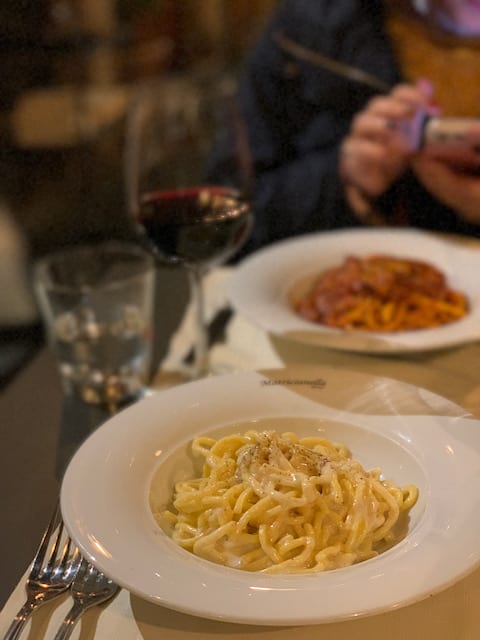
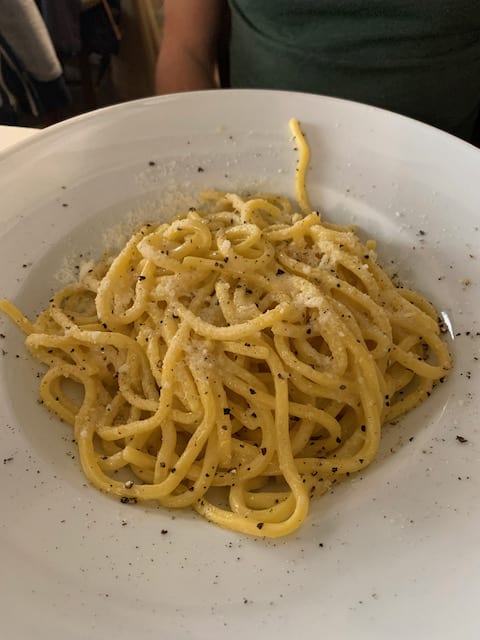

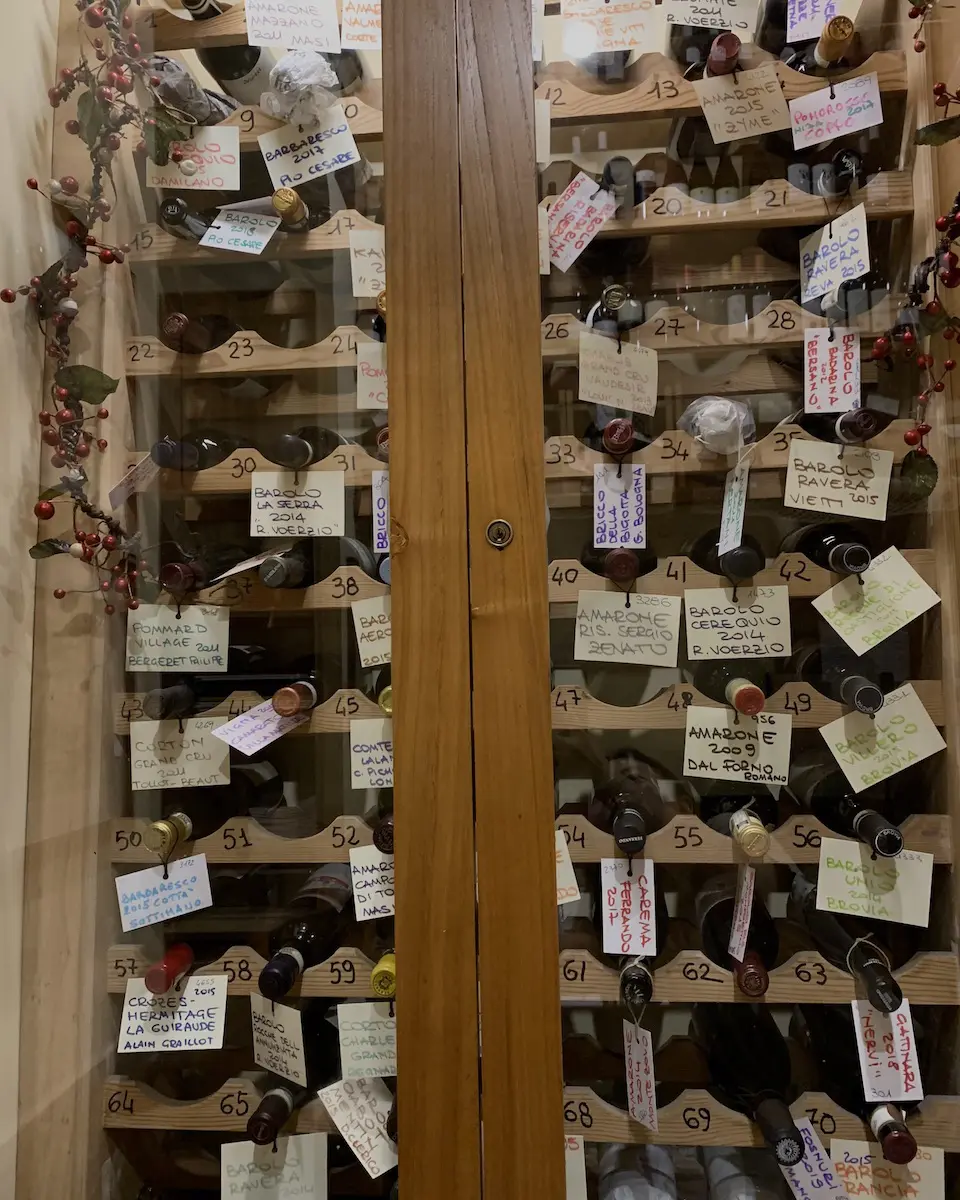
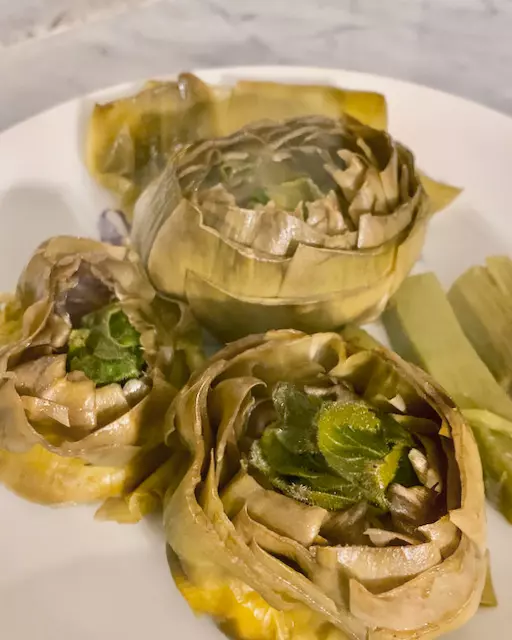

One Response
That looks like some good pasta.